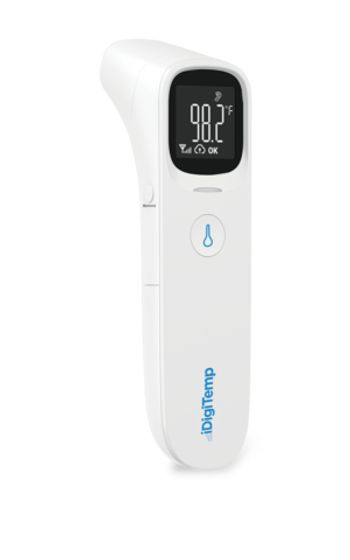
HeartBeam CEO Robert Eno joins company’s board as commercialization nears
Key Takeaways
- HeartBeam's 3D ECG technology, cleared by the FDA, aims to revolutionize cardiac monitoring with remote, cable-free capabilities.
- CEO Robert Eno, with over 30 years in medical technology, joins HeartBeam's board to drive commercial success.
HeartBeam's innovative 3D ECG technology revolutionizes cardiac monitoring, enhancing remote patient care and enabling timely interventions for heart conditions.
HeartBeam Inc. (NASDAQ: BEAT), a medical technology company developing a novel 3D ECG platform, announced that CEO Robert Eno has been appointed to its board of directors, expanding the board from eight to nine members.
The move comes as HeartBeam prepares for the commercial launch of its 3D ECG technology, which received FDA clearance in December 2024 for arrhythmia assessment. The company submitted an application in January for its software that synthesizes the 3D signals into a standard 12-lead ECG — a key step toward bringing the full platform to market.
Eno joined HeartBeam as president in January 2023 and was named CEO in October 2024. He brings more than three decades of experience in medical technology, including leadership roles at HeartFlow, OptiMedica, NeoGuide Systems, and Avantec Vascular. Before HeartBeam, he was CEO of Preview Medical, which focused on AI-driven cancer diagnostics.
“Rob’s deep expertise in sales and go-to-market strategies perfectly complements the diverse skillset and experience of the board,” said Rich Ferrari, executive chairman of HeartBeam’s Board of Directors. “We are confident that Rob’s perspective will be instrumental in helping HeartBeam achieve its vision of delivering powerful cardiac insights wherever the patient is.”
HeartBeam’s patented 3D ECG system captures electrical activity from three non-coplanar directions to generate a synthesized 12-lead ECG. The company launched an Early Access Program earlier this year to refine clinical workflows, test operational readiness, and build a network of early adopters.
“I am honored to join the HeartBeam Board as we are on the brink of bringing HeartBeam’s novel technology to market,” Eno said. “I look forward to working closely with my fellow Board members as we leverage our diverse expertise to drive the company’s commercial success and accelerate the company’s mission to transform the way cardiac health is managed.”
HeartBeam, based in Santa Clara, holds 14 U.S. and four international patents related to its ECG technology. The company aims to enable remote, cable-free cardiac monitoring in real-world settings — allowing physicians to monitor patients and respond to cardiac conditions without requiring them to visit a medical facility.
Background on how technology is changing ECG
Electrocardiogram technology has undergone significant advancements in recent years, driven by innovations in
AI-powered ECG analysis
AI integration into ECG analysis has enhanced the diagnostic accuracy and predictive capabilities of cardiac assessments. For instance, the National Health Service in England is trialing an AI tool known as AI-ECG risk estimation, which can predict a patient's risk of fatal heart disease and early death by analyzing ECG test results. This tool has demonstrated the ability to identify structural heart issues that may not be apparent to clinicians, potentially guiding timely interventions.
Similarly, the U.S. Food and Drug Administration has granted clearance to Tempus' AI-based algorithm, ECG-AF, designed to identify patients at increased risk of atrial fibrillation.
Advancements in wearable and portable ECG devices
The proliferation of wearable ECG devices has made continuous heart monitoring more accessible. Modern devices, ranging from smartwatches to adhesive patches, allow for real-time tracking of cardiac activity outside clinical settings. These wearables often incorporate AI to analyze data, providing users with immediate feedback and facilitating early detection of anomalies.
Innovations also include the development of contactless ECG monitoring systems. Researchers have explored the use of millimeter-wave radar technology to capture cardiac signals without direct skin contact, potentially offering a more comfortable and convenient monitoring experience.
Integration with telemedicine and remote monitoring
The integration of ECG technology with telemedicine platforms has expanded the reach of cardiac care. Patients can now transmit ECG data to health care providers remotely, enabling timely consultations and reducing the need for in-person visits. This approach is particularly beneficial for individuals in remote areas or those with mobility challenges.
Furthermore, cloud-based systems facilitate the storage and analysis of ECG data, allowing for continuous monitoring and collaborative care among health care professionals. These systems support the early detection of cardiac events and the implementation of preventive measures.
Emerging technologies and future directions
Emerging technologies, such as magnetocardiography (MCG), are being explored for their potential to provide more detailed insights into cardiac function. Companies are developing wearable MCG devices that detect the magnetic fields produced by the heart, offering an alternative to traditional ECG monitoring.
Industry experts say that as ECG technology continues to evolve, the focus remains on enhancing diagnostic accuracy, improving patient comfort, and expanding access to cardiac care. These advancements hold promise for better management of heart health and the early detection of cardiovascular diseases.
Newsletter
Stay informed and empowered with Medical Economics enewsletter, delivering expert insights, financial strategies, practice management tips and technology trends — tailored for today’s physicians.








